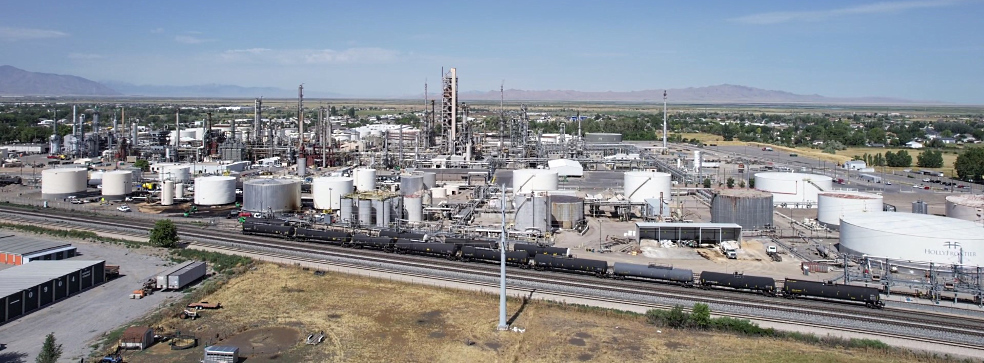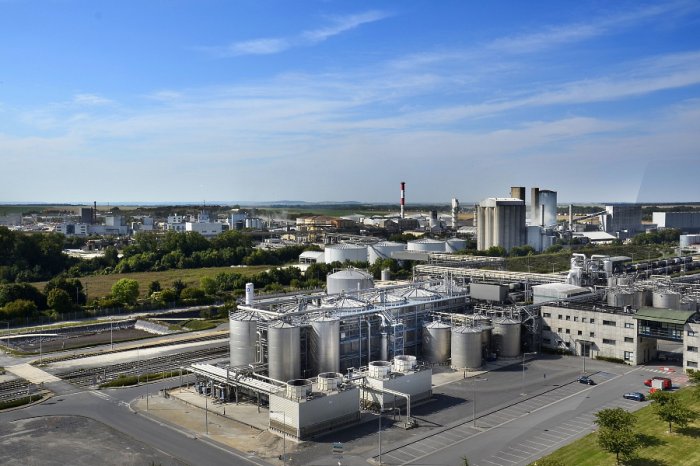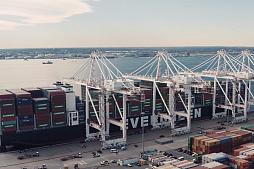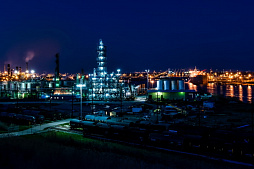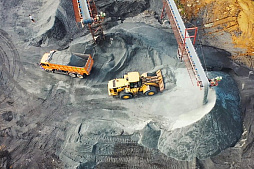To consider an application for financing, fill out the form and send it to us by e-mail along with the project brief, or contact our experts
Investments in the LNG industry can become a viable alternative for the global economy on the way to the energy transition.
Recent increases in natural gas worldwide have somewhat curbed gas demand, leading to a revival of the thermal coal sector in many countries.
However, governments and business remain optimistic about gas as an affordable transition fuel for energy in the coming years, as evidenced by the significant growth in investment in LNG projects around the world.
For a long time, the process of liquefaction of gas was technically difficult and expensive, and transportation was dangerous. Over time, this technology has been significantly improved, and today methane carriers sail the seven seas, and LNG terminals connect the ends of the earth.
The ongoing recovery and upward trend in natural gas and liquefied natural gas (LNG) prices has accelerated.
According to Wood Mackenzie, the pipeline gas and LNG industry is experiencing price consolidation after registering record low prices in 2020. Improvements in LNG technology, improved access to LNG terminals and the uncertain situation with Russian gas supplies are important in determining the future of this multi-billion dollar industry.
Link Bridge Financial LTDA offers long-term financing for LNG terminals and other LNG projects. In addition to large investment loans, our team is ready to develop a customized project finance model, as well as provide credit guarantees.
We also provide financial engineering and consulting services.
Development of the global LNG industry
The first commercial LNG facility launched about 80 years ago was the first stone of a revolutionary avalanche that changed the global energy sector.Today, liquefied gas supports the gasification of the most remote regions of the world, supports their economic development and the fight against air pollution, and also ensures energy independence.
In 1941, the first commercial LNG plant was commissioned by the East Ohio Gas Company in Cleveland in the United States. More than 60 years have passed since the first delivery of liquefied natural gas from Louisiana to the United Kingdom using the Methane Pionieer methane tanker.
In 2020, the global demand for liquefied natural gas decreased by an average of 5-7%, which became the biggest shock in the entire history of the this new type of fuel. The market quickly recovered after the temporary difficulties caused by the pandemic.
Since then, this market and especially investment in LNG terminals around the world has grown impressively.
This also applies to regasification terminals of liquefied natural gas, LNG plants, as well as the fleet of methane tankers.
According to a report by the International Gas Union (IGU), at the end of 2020 there were 572 such units, including FSRUs and FSUs.
As of February 2021, the capacity of LNG plants was almost 453 million tons per year, and the capacity of LNG receiving terminals exceeded 850 million tons per year. The total volume of gas trade in the form of LNG also increased to 356 million tons, with Australia being the largest exporter (77.8 million tons) and Japan the largest importer (74.4 million tons).
There is also a trend towards faster growth in international trade in liquefied gas compared to gas transported by pipelines. According to the BP Statistical Review of World Energy 2021, global LNG traffic in 2020 was almost 488 billion cubic meters, compared to 756 billion cubic meters of pipeline gas.
Today, investments in LNG terminals and regasification plants are rapidly increasing against the background of the urgent need of European consumers to diversify supplies.

Future investment in LNG projects: opportunities and challenges
The advantages of natural gas have made this type of fossil fuel one of the pillars of the global energy sector.Gas is widely used in the electricity production, heating, and as a fuel for transport. Relative safety for the environment due to a lower carbon footprint compared to coal encourages the use of natural gas even during the global transition to renewable energy sources.
Natural gas is currently the main component of the power generation systems of many countries. Although there is a political will to reduce dependence on fossil fuels and move to a low-carbon energy mix, demand for LNG will increase in the medium term. According to Rystad Energy, global gas demand will grow by 12.5% between now and 2030, from 4 trillion cubic meters to about 4.5 trillion cubic meters.
Gas demand in North America will remain relatively stable.
In contrast, strong economic growth and pro-gas policies will drive demand for natural gas in the Asia-Pacific region, which will grow by 30% from 0.9 trillion cubic meters to about 1.15 trillion cubic meters by 2030.
By this time, the Americas, mainly the US, will account for 30% of total global natural gas demand, while the Asia-Pacific region will account for 25%.
The problem of access to natural gas became especially acute during the period of rapid development of Asian economies, which are located many thousands of kilometers from the fields in the Persian Gulf, Western Siberia, Africa and America. Investments in LNG infrastructure solve this problem, providing all countries with access to a reliable and convenient source of energy. At the same time, the development of the LNG industry significantly reduces dependence on pipeline gas, which has recently been actively used by some exporters to achieve political and military goals.
While the difficulty of accessing financing for the LNG industry in 2020 appears to be a thing of the past, a real future challenge for the LNG industry will be developing projects that are aligned with climate change goals.
Despite the recovery in prices and demand, mainly from Asia, investors still face increasing calls to stop financing fossil fuel projects to meet green transition goals.
Over the past decade, natural gas has been considered the fastest-growing fossil fuel, which some decision makers and industry experts calling the "fuel of the new century."
However, investment in the more complex and expensive LNG industry has been slowed by two major barriers:
• First, there are ambitious energy transition programs in which gas is considered only as a temporary "bridge" to sustainable and cheap renewable energy.
• Second, it is cheap thermal coal, which is still widely used in many developing countries. Moreover, the revival of financing of coal-fired thermal power plants is considered by the leading EU countries in the context of ensuring energy security.
Despite different views on the role of liquefied natural gas in the global energy sector, leading international organizations predict a bright future for the LNG industry at least until 2040-2050.
Gasification using LNG regasification terminals can provide access to gas both for household, utility, industrial consumers, and for large-scale electricity generation. Special economic zones could also be an important areas for investment in LNG regasification terminals.
Geopolitical tensions drive financing for the LNG industry
As the global energy crisis deepens and countries struggle to secure reliable sources of energy, investment in liquefied natural gas (LNG) infrastructure is increasing.Due to the war in Ukraine, experts forecast an increase in financing of the LNG sector to $42 billion per year by 2024.
This investment is 200 times higher than in 2020, when only $2 billion was invested in LNG development due to the pandemic. However, the development of LNG projects may decline after 2024 as European governments move away from fossil fuels and accelerate investment in sustainable low-carbon energy infrastructure.

New LNG terminals are mainly being planned because of the short-term increase in demand for natural gas in Europe and Asia due to the war and related sanctions and restrictions on Russian gas exports.
Spending on new LNG projects is $28 billion in 2021 and $27 billion in 2022.
The next two years are predicted to be full of news about large-scale investment projects.
Investments projected as a result of sanctions in 2023 will show modest growth, approaching $32 billion, before peaking at $42 billion in 2024. After this peak, LNG investment will return to 2020 levels, gradually declining to $2.3 billion in 2029. Despite an expected surge in 2030, when project announcements are expected to reach nearly $20 billion, investment in new LNG terminals, vessels and plants is unlikely to return to 2024 levels as countries increase investment in green energy.
One of the clear examples of the development of the LNG industry is the North Field in Qatar, which is being developed by Qatargas.
In particular, the recently planned investment in the North Field East LNG aims to increase the production of liquefied natural gas in Qatar from 77 to 110 million tons per year by 2025.
The second phase of the expansion of the field, called North Field South, will increase the production of LNG to 126 million tons per year until 2027.
With new infrastructure, global LNG supply is expected to nearly double in the coming years, from 380 million tons per year in 2021 to 630 million tons per year in 2030, with a significant number of large-scale LNG projects already underway or in the pipeline. LNG production is projected to peak at about 700 million tons per year in 2034.
The United States is set to cement its place as the world's top LNG exporter in the coming years, as growing domestic supply and higher prices in Europe and East Asia encourage American companies to sell more gas abroad.
The UAE, Mozambique and other natural gas exporting countries will also continue to increase LNG supplies, increasing investment in production, supply and regasification.
Since large-scale fracking has been practiced in the United States, the US LNG industry has been a serious competitor to gas from Russia, Qatar, and Norway.



